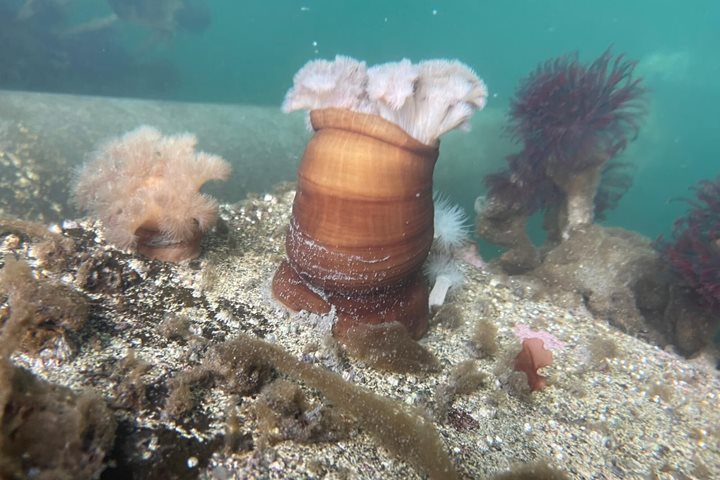After an overcast day in Glacier Bay, the weather was picturesque for our adventures in the Inian Islands. The Inians are located at the gateway to the northernmost entrance into Southeast Alaska. This bottleneck creates a torrent of tidal activity that brings a diverse array of marine life to the area. Even before we boarded our Zodiacs, we were greeted by multiple humpback whales feeding just beyond the pass.
Once on the water, we wove through more of these massive animals that can be over 40 feet long and forage for more than 20 hours a day during the long Alaskan summer. Besides the whales, we were greeted by several sea otters, the world’s largest weasel. These biological marvels manage to thrive in frigid ocean temperatures despite not having any blubber. Instead, they rely on a thick coat of fur that can be as dense as a million hairs per square inch. This thick fur led to them being hunted by the early European inhabitants of Alaska and the entire West Coast. Almost exterminated, the otter population is now rebounding rapidly through large portions of the Alaskan panhandle.
Sea lions make up an important part of this ecosystem, and a large group of the sizable pinnipeds were found in the rushing currents as they hunted for fish. Capable of growing up to 2,000 pounds, male sea lions control large swaths of intertidal rock during the breeding season, pushing out younger males while trying to maintain as large a harem as possible.
During the afternoon, we moved to Fox Creek on Chichagof Island. Signs of bears were spotted along the well-manicured game trails created by generations of Sitka black-tailed deer and brown bears. Sitka spruces and hemlocks created a comfortable and shady atmosphere for our hikes through this old growth forest, and the stream that will soon hold pink and coho salmon only added to the ambiance.
We now cruise southeast, bound for Frederick Sound and hopefully more incredible sightings of humpback whales.







